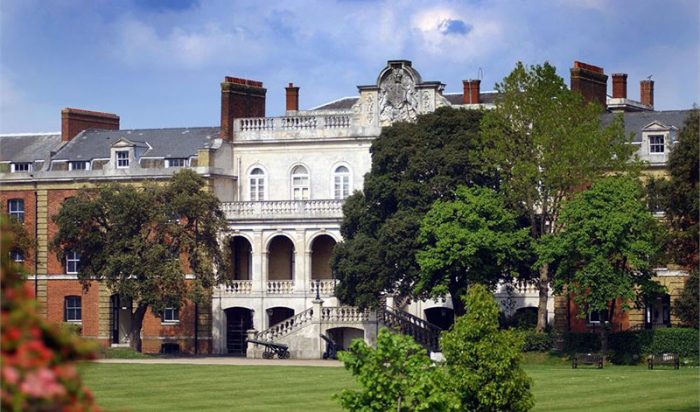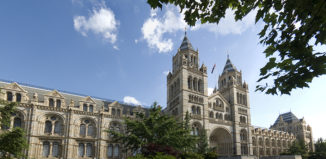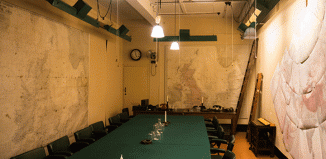British military museums: Top 10 to visit
Interested in Britain’s military history? Here are 10 of the best British military museums to learn more about our national conflicts through the ages, the lives of the servicemen and women and the work of our armed forces today
WORDS: Katy Green
1. Royal Marines Museum, Portsmouth
Situated on the seafront at Southsea, the Royal Marines Museum is housed in a beautiful Grade II-listed Victorian building that was originally built in 1867 as the offices for the Royal Marines Artillery and later became the Officers’ Mess. With fine architecture and a long association with the Royal Marines, this is the perfect place to learn about the difference the Marines made in battles, including D-Day in the Second World War, and their prominent role in the Falklands conflict.
Exhibits allow you to explore all aspects of Marines’ life, from forging the British Empire in the Victorian era to jungle warfare in the Far East, through to present-day conflicts. A poignant reminder of the bravery of the Royal Marines is found in the spectacular Medal Room, which proudly displays over 8,000 medals, including rare awards and 10 Victoria Crosses.
2. National War Museum, Edinburgh
Edinburgh Castle houses a number of military museums and exhibits, including the Regimental Museum of the Royal Scots Dragoon Guards, the Prisons of War exhibition, and the Scottish National War Memorial – a beautiful building that honours the Scottish soldiers killed in the First World War and later conflicts. Entry to the National War Museum is included in admission to Edinburgh Castle and explores over 400 years of Scottish military history. Discover how the Highland warrior has become an icon of Scottish identity and the role Scottish soldiers played in defending the British Empire. Try to imagine what active service might have been like through the displays of weapons and equipment.
3. RAF Museum, Cosford, Shropshire
If you love planes, then a visit to Cosford is a must. This vast museum features a range of galleries, interactive exhibits and a huge variety of rare and important military aircraft. With so much to see and do you may need more than a single visit. Highlights of the museum include a unique collection of war planes from Britain and rare examples from our allies and enemies; the missile collection, which features a complete set of the Second World War German test equipment that set the template for the missile technologies of today; and flight simulators including a dog fight between a Spitfire and an Me-109. There is also a gallery that explores the history of the RAF, which was founded in 1918 by Lord Trenchard. Although the youngest of our military forces, it is the oldest independent air force in the world.
4. Royal Naval Museum, Portsmouth
Based at Portsmouth Historic Dockyard, where there is plenty to see and do, the Royal Naval Museum covers the rich history of the Royal Navy, dating back to King Alfred’s first battle at sea in 882. Multimedia exhibitions show how the navy has defended our country and attacked enemies, establishing itself as a dominant maritime force in the 19th century, when Britannia ruled the waves, as well as looking at the role of the modern navy which fights piracy and prevents trafficking among other duties. The Nelson Gallery contrasts the public hero with the private man through personal possessions, portraits and an audiovisual story of his life and career. The Twentieth Century gallery explores the effects of two world wars on the Royal Navy, including official and personal items from those who served, with touching details that illustrate true naval life.
5. Winston Churchill’s War Rooms, London
Visit the secret Second World War bunker and museum that tells the story of Winston Churchill’s life and legacy. The permanent exhibition maps the life of the war hero and his colleagues as they made their world-changing decisions from the bunker. Other exhibits reveal intriguing details about working life in the bunker, such as the Remington Noiseless typewriter, which was used because Churchill hated any distractions, or a gas mask adapted so switchboard operators could continue their work even under gas attack.
Visitors are offered the chance to understand what life was really like for the veterans who worked in secret with Winston Churchill from the men and women themselves in an audiovisual display.
6. The Fleet Air Arm Museum, Somerset
Representing the flying arm of the Royal Navy, the Fleet Air Arm Museum comprises four vast halls telling the stories of naval aviation from the first manned kites towed behind naval vessels, to helium filled airships, and the carrier borne aircraft of WW2 and modern Sea Harriers and helicopters to dramatically present the development of naval aviation. Exhibitions include a fantastic theatre experience that transports you to the heart of the action aboard HMS Ark Royal, and fascinating displays of aircraft, including the first British-built Concorde, where you can explore the cockpit and discover the technology that allowed this plane to travel at twice the speed of sound.
7. Imperial War Museum North, Manchester
Opened in 2002, the North museum is the newest addition to the Imperial War Museum family, which includes museums in London and Duxford, HMS Belfast and the Churchill Museum and Cabinet War Rooms which lie in Churchill’s secret headquarters beneath Whitehall in London. The landmark building in Manchester has an architectural design based on the concept of a globe shattered by conflict. The museum uses sound, film and photography of the Imperial War Archives to great effect and explores how conflict has affected all of our lives. A highlight of a visit here has to be The Big Picture, a spectacular 360 degree light and sound show that projects changing images onto the walls, floors and even visitors themselves on a number of war related topics.
8. The Tank Museum, Dorset
Introduced during the First World War, the tank was a British invention that changed warfare forever and with over 300 tanks from 29 countries, the Tank Museum has the largest collection of armoured vehicles in the world. The museum has an arena for viewing tanks in action, as well as state of the art technology to create cutting-edge displays that tell the story of the tank. Covering 100 years of history, the museum explores the conditions that led to the invention of the tank and its development within the context of the turbulent events of the 20th century. The Trench Experience allows visitors to follow in the footsteps of a First World War soldier, from the recruiting office to the front line, making it possible to see at first hand how important the tank was in breaking the stalemate.
9. Royal Welch Fusiliers Museum, Caernarfon
Formed in 1689, the Royal Welch Fusiliers have a fascinating history having served throughout the world, stretching back to the campaigns of William III, the wars with revolutionary and Napoleonic France, and the Crimean wars as well as the World Wars, the Boer war and peacekeeping missions, including Bosnia in 1995. Located in two towers of Caernarfon Castle, the museum is one of many that commemorate and display the history of local regiments across the country. Here you can learn what life was like for the regiment and their families, discover how the Royal Welch won 14 Victoria Crosses and hear the words of famous writers who served with the Royal Welch during the First World War, such as Siegfried Sassoon and Robert Graves.
10. National Army Museum, London
Discover the impact the army has had on the story of Britain and the world by uncovering the history of the British soldier back to 1066, through four permanent exhibitions at the National Army Museum. The Making of Britain, Changing the World, World Wars and Fighting for Peace explore the changing role of the soldier in conflicts throughout the centuries. A number of the exhibits have interactive elements and visitors can try on an English Civil War helmet and feel the weight of a contemporary canon ball and chain mail armour. Models, photographs, videos and archive footage help to bring to life the bravery and determination of the soldiers who defended our country, built the British Empire and continue to fight for peace.








